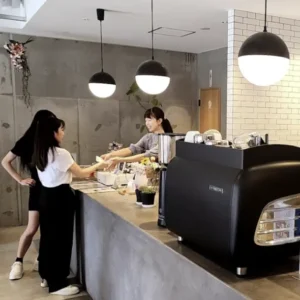Additional Information

The Rise of Flexible Work: A New Era for Cafes and Remote Workers
A profound shift is reshaping how people work, study, and connect. With advances in technology and changing societal norms, working outside of traditional spaces—be it home or structured institutions—has become more than a temporary adjustment. It’s a movement that is here to stay, benefiting individuals, businesses, and communities alike.
The Growth of Flexible Work
The trend toward flexible work has grown exponentially, accelerated by technological improvements and evolving cultural attitudes. High-speed internet, collaboration tools, and cloud technology have untethered people from fixed locations, giving them the freedom to work where they feel most inspired and productive.
For Professionals: Corporations are embracing this model, recognizing that it enhances productivity, reduces overhead costs, and attracts top talent.
For Freelancers and Entrepreneurs: Flexible workspaces allow them to combine focus with creativity, providing the freedom to design their own workday.
For Students: Graduate and postgraduate students are increasingly leveraging remote and hybrid study models to access global resources without the constraints of campus life.
Why This Trend Is Here to Stay
1. Technology Is the Great Enabler
Tools like Zoom, Slack, and project management platforms make collaboration seamless across distances.
Cloud computing ensures that essential files are accessible anywhere.
Portable devices and advancements in mobile connectivity allow work and study to happen anywhere—cafes, parks, or even while traveling.
2. Cultural Shifts Toward Flexibility
People value autonomy over where and how they work, favoring productivity over rigid schedules.
Businesses recognize that happy, flexible workers are more engaged and less likely to burn out.
3. Economic and Environmental Benefits
Flexible work reduces commuting, saving time, money, and energy while decreasing urban congestion and pollution.
Local economies benefit as workers spend money in cafes and community hubs, redistributing economic activity.
Why Cafes Are Perfect for This New Model
Cafes are uniquely positioned to thrive in this era. They combine the casual, welcoming atmosphere of a community space with the infrastructure needed for productive work. Many cafes are already adapting to these changes, realizing the potential to attract a new demographic of regulars.
Appealing to a Diverse Crowd: Freelancers, remote workers, and students bring laptops and ideas to cafes, creating vibrant, dynamic environments.
Transforming Quiet Hours into Opportunities: Flexible workers often fill cafes during traditionally slow periods, providing steady revenue streams.
Building Community: Cafes that embrace this trend become central to local life, fostering connections and loyalty among patrons.
The Future of Flexible Work in Cafes
This movement represents more than a passing trend—it’s a cultural evolution. By embracing the needs of flexible workers, cafes can:
Offer charging stations and strong Wi-Fi to attract productivity-focused customers.
Provide comfortable seating and layouts conducive to solo work and small meetings.
Emphasize welcoming, friendly service that creates a “home away from home” atmosphere.
The era of working outside fixed locations is not just a temporary adaptation—it’s a paradigm shift that benefits everyone. Cafes that adapt to this growing trend can transform into thriving hubs for creativity, productivity, and connection. By aligning with this movement, they’re not only supporting the changing needs of their communities but also shaping the future of work.
Join the growing wave of forward-thinking cafes and flexible workers. Visit cafeworkplace.com to learn more about how we’re helping cafes adapt and thrive in this exciting new era.

Who is a typical cafe laptop worker?
A typical cafe laptop worker —or someone who spends time working in a café—is a reflection of Melbourne’s diverse, coffee-loving culture. They are:
Professionals on the Go: Office workers popping in for a change of pace, using the café as a backdrop for emails or Zoom calls.
Creatives and Startups: Designers, writers, and startup founders brainstorming over lattes and flat whites.
Students and Lifelong Learners: Those diving into study or personal growth with a coffee and a focused mindset.
Locals Supporting Locals: Warm-hearted people who care about their community and want to see local businesses thrive.
Quiet, Thoughtful Types: People enjoying a peaceful moment, reading a book, or reflecting in the cozy environment of a café.
Ultimately, cafe laptop workers are community-minded individuals. They value connection, both social and professional, and they bring warmth and purpose to the spaces they inhabit. In a city like Melbourne, where coffee is more than a beverage—it’s a lifestyle—these workers form the backbone of a thriving café culture.